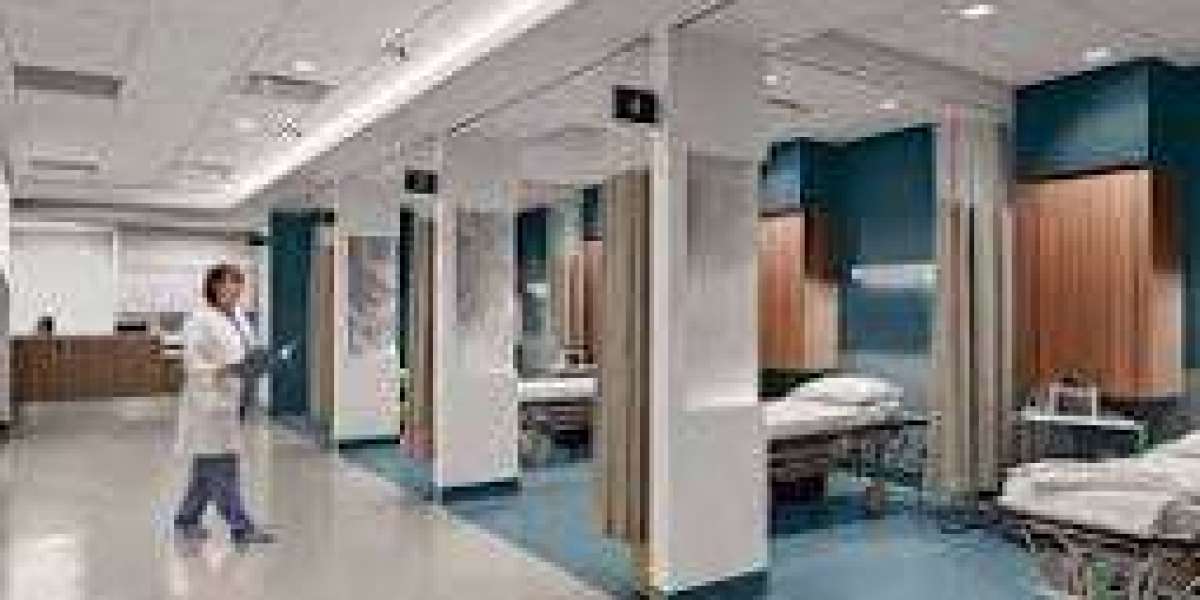Healthcare interior design is a specialized field focused on designing environments that promote healing, enhance patient experiences, and improve staff efficiency. From hospitals and clinics to wellness centers and long-term care facilities, these interiors prioritize comfort, functionality, and safety while reflecting the latest trends in design and healthcare innovation.
The ideas, advantages, and essential components of hospital interior design will be discussed in this article, along with how it improves patient and staff outcomes.
The Importance of Healthcare Interior Design
Healthcare facilities are more than just functional spaces; they are environments where patients seek care, families find support, and healthcare providers deliver life-saving services. Thoughtful interior design in these spaces can:
Promote Healing
Calming aesthetics, natural light, and biophilic elements can reduce stress and anxiety, supporting faster recovery.Improve Efficiency
Optimized layouts and well-organized spaces enhance staff workflows, enabling more efficient delivery of care.Enhance Patient Experience
Comfortable and welcoming environments make healthcare visits less intimidating and more positive for patients and their families.Ensure Safety and Hygiene
Durable, easy-to-clean materials and infection-control measures are integral to maintaining a safe and hygienic environment.Reflect Innovation
Modern healthcare design integrates advanced technology and sustainability, positioning facilities as forward-thinking and patient-focused.
Key Principles of Healthcare Interior Design
Patient-Centered Design
Spaces are tailored to the physical and emotional needs of patients, with features like private rooms, comfortable furniture, and soothing decor.Functionality and Efficiency
Design focuses on optimizing layouts for healthcare providers, ensuring easy access to equipment, supplies, and workspaces.Safety and Accessibility
Healthcare interiors adhere to safety standards, incorporating slip-resistant flooring, proper lighting, and ADA-compliant features.Biophilic Design
Bringing elements of nature into the facility—like plants, natural materials, and sunlight—improves air quality and reduces stress.Flexibility and Scalability
Designs accommodate future changes, such as evolving technology, new medical practices, or increased patient volumes.Hygiene and Infection Control
Materials and layouts are selected to minimize contamination risks and facilitate easy cleaning.
Key Elements of Healthcare Interior Design
Color Schemes
- Soft, warm colors create a calming effect for patients and families.
- Bright, energizing tones are used in areas like pediatric clinics or activity rooms.
Lighting
- Natural Light: Large windows and skylights enhance mood and support circadian rhythms.
- Task Lighting: Focused lighting improves visibility in treatment areas.
Furniture and Fixtures
- Ergonomic seating for patients, families, and staff enhances comfort.
- Durable, non-porous materials ensure cleanliness and longevity.
Wayfinding and Navigation
- Clear signage, intuitive layouts, and color-coded zones help patients and visitors navigate the facility easily.
Private and Quiet Spaces
- Private rooms for patients and quiet zones for families offer comfort and privacy during stressful times.
Technology Integration
- Smart systems for patient monitoring, automated lighting, and digital wayfinding enhance functionality and care.
Acoustics
- Soundproofing and noise-reducing materials create a peaceful environment, minimizing distractions and stress.
Applications of Healthcare Interior Design
Hospitals
- Design elements focus on creating patient-friendly wards, advanced operating theaters, and efficient staff areas.
Clinics and Outpatient Facilities
- Welcoming reception areas, functional exam rooms, and family-friendly waiting spaces.
Wellness and Rehabilitation Centers
- Soothing environments with natural materials and spaces for physical therapy, counseling, or relaxation.
Senior Living Facilities
- Comfortable, accessible interiors tailored to the needs of aging residents, including memory care features.
Pediatric Facilities
- Bright, cheerful designs with interactive elements to create a positive experience for children and their families.
Benefits of Healthcare Interior Design
Enhanced Patient Outcomes
Healing-focused environments support faster recovery and reduce stress, contributing to better overall health outcomes.Improved Staff Performance
Efficient layouts and ergonomic workspaces reduce fatigue and help healthcare providers deliver better care.Increased Patient Satisfaction
Comfortable, welcoming spaces make patients feel cared for, fostering trust and loyalty to the facility.Cost Efficiency
Durable materials and energy-efficient systems reduce maintenance and operational costs.Brand Reputation
Modern, innovative interiors reflect the facility’s commitment to quality care and position it as a leader in the industry.
Trends in Healthcare Interior Design
Sustainable Design
- Use of renewable materials, energy-efficient lighting, and sustainable construction practices.
Telehealth Integration
- Private rooms equipped with technology for virtual consultations.
Wellness-Focused Spaces
- Areas for yoga, meditation, and relaxation for patients, families, and staff.
Inclusive Design
- Accessibility features that ensure the facility is welcoming for people of all abilities.
Minimalist Aesthetics
- Clean, uncluttered spaces with neutral tones that focus on functionality and tranquility.
How to Choose a Healthcare Interior Designer
Experience and Expertise
- Look for designers with a proven track record in healthcare projects.
Portfolio Review
- Assess their past work to ensure it aligns with your vision and facility needs.
Client Testimonials
- Speak with previous clients to evaluate the designer’s reliability and quality of service.
Sustainability Practices
- Ensure the designer incorporates eco-friendly materials and energy-efficient systems.
Collaborative Approach
- Choose a designer who values input from stakeholders, including medical staff and patients.
Conclusion
More than just aesthetics, healthcare interior design aims to create environments that inspire, encourage, and heal. Well-planned medical facilities promote staff productivity, improve patient experiences, and demonstrate a dedication to high-quality care. Professional healthcare interior designers turn hospital areas into settings that support well-being and operational excellence by fusing comfort, innovation, and functionality.








